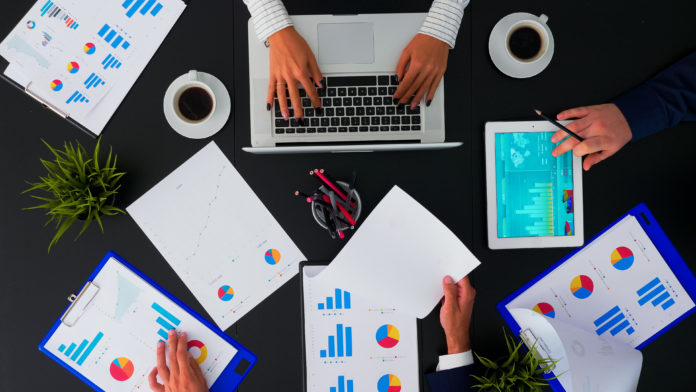
The business environment has become highly dynamic, so that stages of procurement process have, therefore, become one of the most important elements towards an organization’s success. Procurement is a function that involves a group of activities which are essential for the smooth acquisition of supplies and services, starting with the identification of the need for supply contract management. Recognition of the stages as such is critical to businesses to simplify their operations, reduce their expenses, and have a good-working relationship with their suppliers. The introduction of procurement portal applications has transformed the ways organizations procure goods by making them simple to use, and allowing users to have a real-time view of the entire procurement process.
- Identifying Needs and Requirements
The very first step is identifying the needs and requirements of the organization which will lead to the next stage of the procurement process. This involves conducting a thorough needs assessment to ascertain what are the goods/services needed as far as quality, quantity, timelines of delivery and the budget are concerned. A correspondence of interest of all the stakeholders such as customers and purchasing staff is one of the crucial factors for the success of requirements gathering.
- Marketing Research and Supplier Assessment
After having the needs and requirements established, the next step is to do market research to identify possible suppliers. This stage is intended to assess suppliers using criteria such as their capabilities, pricing, reputation, and compliance with relevant regulations and industry standards. Using the procurement portal software will speed up this process immensely by providing access to a centralized database of approved suppliers that can be used to carry out the supplier evaluation and selection process efficiently.
- Solicitation and Bidding Process
The next stage after a list of likely suppliers has been compiled is to invite quotes or proposals. This stage is usually in the form of an RFP or RFQ to the suppliers who have been shortlisted. The procurement solicitation documents spell out the particulars of the requirements, the evaluation criteria, and the terms and conditions of procurement. Procurement portal software can automate this step by making use of the electronic distribution of contracts as well as online bidding, thereby ensuring transparency and fairness.
- Bid evaluation and Supplier Selection
The procurement team reviews the bids or proposals once they receive them, and it does so based on established criteria such as pricing, technical capabilities, delivery timelines, and the overall value proposition. This step may involve teamwork involving cross-functional collaboration and decision-making to choose the best supplier. This stage can also be supported by procurement portal software that has tools for bid comparison, evaluation, and scoring, which ensure an objective and consistent decision-making process.
- Contract Negotiation and Award
The next stage involves contract negotiation and awarding after the supplier is selected. The negotiation process is followed by the production of a detailed contract that stipulates the conditions, prices, delivery timelines, and performance standards. The right negotiation skills, coupled with a clear understanding of the company’s needs, are the two most important weapons in our arsenal to get the best terms of agreement. Procurement portal software can be a great provider for this step because it gives contract management abilities, which bring about version control, electronic signatures, and centralized storage of contractual documents.
- Contract Management and Performance Monitoring
The contract management and performance monitoring stages follow the award of the contract which marks the transition to the contract management and performance monitoring parts. At this moment, we ensure that the supplier sticks to the accepted terms and conditions, monitor performance indicators, and we step in to resolve any issues or disputes that might arise. It is very crucial at this point to have procurement portal software since it can be used to follow supplier’s performance in real time, generate reports, and interact with the supplier.
- Supplier Relationship Management
Managing supplier relationships is the final phase of the procurement process. The latest phase will be based on the building blocks of mutual benefits, continuous improvement, and innovation to engage in long-term and cooperative relationships with suppliers. Communication, reflection of work, and co-operation in solving problems are the major points of this stage. By means of the software procurement portal, it is possible to support the supplier relationship management practice through the provision of a shared platform for communication, performance measurement, and collaboration between suppliers and the organization.
- Risk Management and Compliance
In the entire procedure of procurement, the risks are to be identified and the corresponding methods to mitigate the risks shall be undertaken. In addition, adherence with the legal provisions, rules, and organizational instructions have to be guaranteed. This phase entails a series of risk assessments, employment of control and safeguard facilities and a protocol for non-compliance. The application software of procurement portals can be beneficial in risk management and compliance, as it includes features for policy management, audit trail, and warning mechanisms when there is a breach or deviation expected.
- Sustainable and Ethical Sourcing
Nowadays, in the world of business which is very attentive toward social responsibility, companies are paying more attention towards sustainability and ethics when sourcing. The initial part herein involves evaluation of suppliers’ ESG rating, their ethical business engagement and care for the society and environment. ESG criteria can likewise be integrated into the vendor assessment and selection processes by means of procurement portal software thereby assuring that the processes measure up to the organization’s sustainability goals and ethical principles.
- Digital Transformation and Automation
Procurement is the process where digitalization and automation can be fully applicable. This will make the process efficient by doing the workflow automatically and imparting less manual efforts and improved workflow. At this step, we use leading technologies like AI (artificial intelligence), RPA (robotic process automation), and machine learning to automate repetitive works such as data entry, document processing, and decision assistance. Digital transformation process can be ignited by the procurement software portal which can interface with different innovative technologies. As such the automation of the purchase activities can be overly simplified.
Conclusion
The procurement process is multi-dimensional and ever-changing. It consists of planning, operation, and control of the process in a continuous manner. Through having enough knowledge and expertise in each stage of procurement, like spend analysis, risk management, sustainable sourcing, digital transformation, and continuous improvement, organizations will get cost savings, efficiency, and strategic advantages in the long run. The procurement portal software has altered the game and now enables organizations to standardize business processes, increase transparency, and develop mutually beneficial relationships with suppliers. In the wake of ongoing changes and modifications that firms go through to adapt to the dynamic market situation, the efficient procurement process will be among the major drivers of company growth and advantage in the market.









